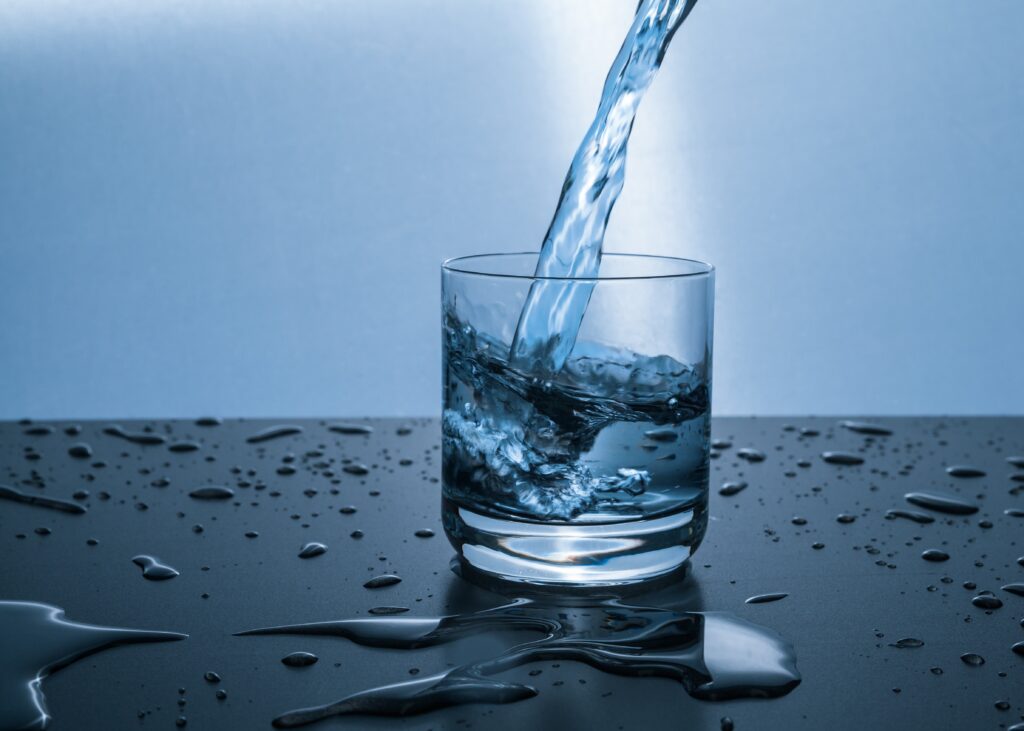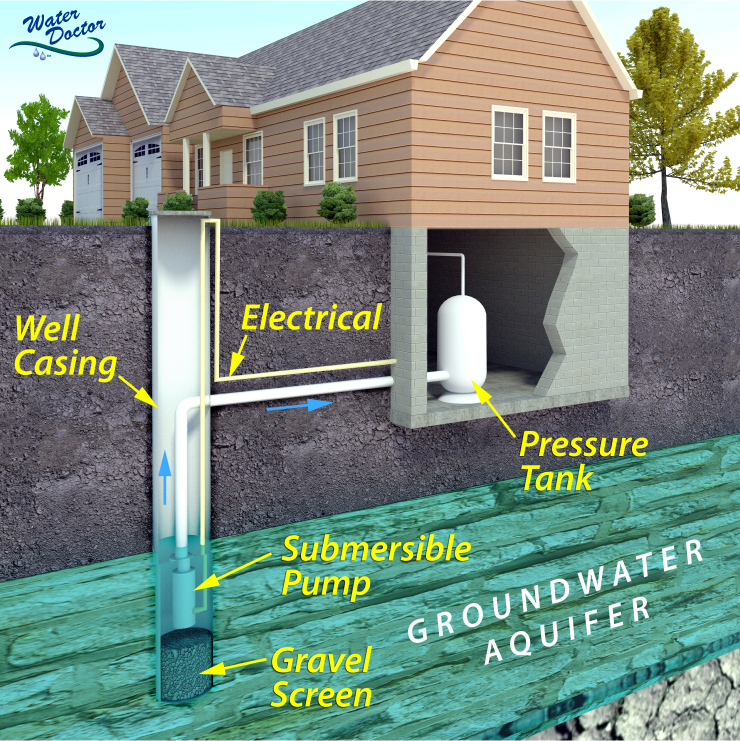What Is a Well Water Pressure Tank?
In a home with a well, an electric pump draws the water from the well and sends it to your home at a high enough pressure to supply all the fixtures inside with plenty of water. If a pump starts and stops too often, its overall life span can be reduced due to the substantial stress of the startup process and initial current surge.
A well water pressure tank stores several gallons or more of water under pressure, allowing the tank to supply fixtures after the pump has turned off. This prevents the pump from cycling on every time water is needed, extending its life span.
How Does a Pressure Tank Work?
A pressure tank is filled with a large volume of air, and it has an inlet that allows water into the bottom of the tank. Because air is compressible and fluids are not, the water entering the tank will compress the air, pressurizing it. Once the pump reaches maximum pressure and shuts off, typically 50-60 PSI, the compressed air will force water out of the tank when a fixture requires it, without turning the pump back on. Once the air pressure in the tank drops below the minimum water pressure of the system, typically 30-40 PSI, the pump will turn back on to supply fixtures and refill the pressure tank.
Types of Pressure Tanks
There are several types of pressure tanks, but they all rely on compressed air to provide pressure between pump cycles. The common types include:
- Air-over-water tanks – These tanks feature a single chamber, with the lighter air naturally rising to the top and compressing into a smaller volume as water fills the tank. With no separation between the water and air, air can dissolve into the water, requiring the air to be checked and refilled frequently. Some models feature a wafer or float between the water and air to minimize this problem.
- Diaphragm tanks – Diaphragm tanks feature a rubber or vinyl disc-shaped diaphragm that separates the air and water into individual compartments. As water is pumped into the tank, it stretches the diaphragm upward toward the top of the tank, compressing the air.
- Bladder tanks – In bladder tanks, the water enters a balloon-like bladder, which is surrounded by air that occupies the remaining volume of the tank. As the bladder expands with water, the air is compressed. When water leaves the tank, the air compresses the bladder back to its original size.
Well water pressure tanks feature several different capacity measurements. The “Equivalency Rated Size” on a diaphragm or bladder tank indicates the equivalent size of the air-over-water tank that it can replace. The “Actual Capacity” is the total volume of the tank, not its usable capacity. The “Drawdown” is the amount of usable capacity, or the volume of water supplied before the pump turns back on.
All pressure tanks must be checked periodically for proper air pressure, which is typically a few PSI below the low-pressure setting of the pump. A professional should inspect your tank if you notice frequent pump cycling, tank leaks, unstable water pressure, or water from the air valve.
Well Water Pressure Tank Service in Maryland
If you suspect a problem with your pressure tank, contact our team at Water Doctor today. Our certified personnel can solve nearly any well problem, from leaking pressure tanks or poor water quality to pump failures. We have been serving homeowners and businesses throughout Maryland since 1979, providing quality water testing, water treatment, and well water services.
Contact Water Doctor at (877) 677-9275 for an appointment!
Proudly Serving The Following
Maryland Counties
Anne Arundel | Howard | Baltimore | Frederick | Montgomery | Carroll | Charles | Calvert | Queen Anne's | Harford
Anne Arundel | Howard | Baltimore | Frederick | Montgomery | Carroll | Charles | Calvert | Queen Anne's | Harford






